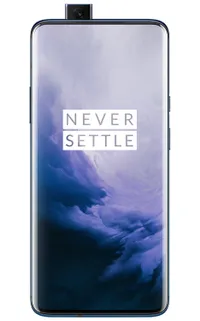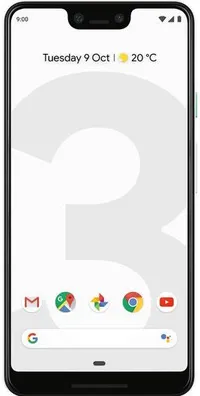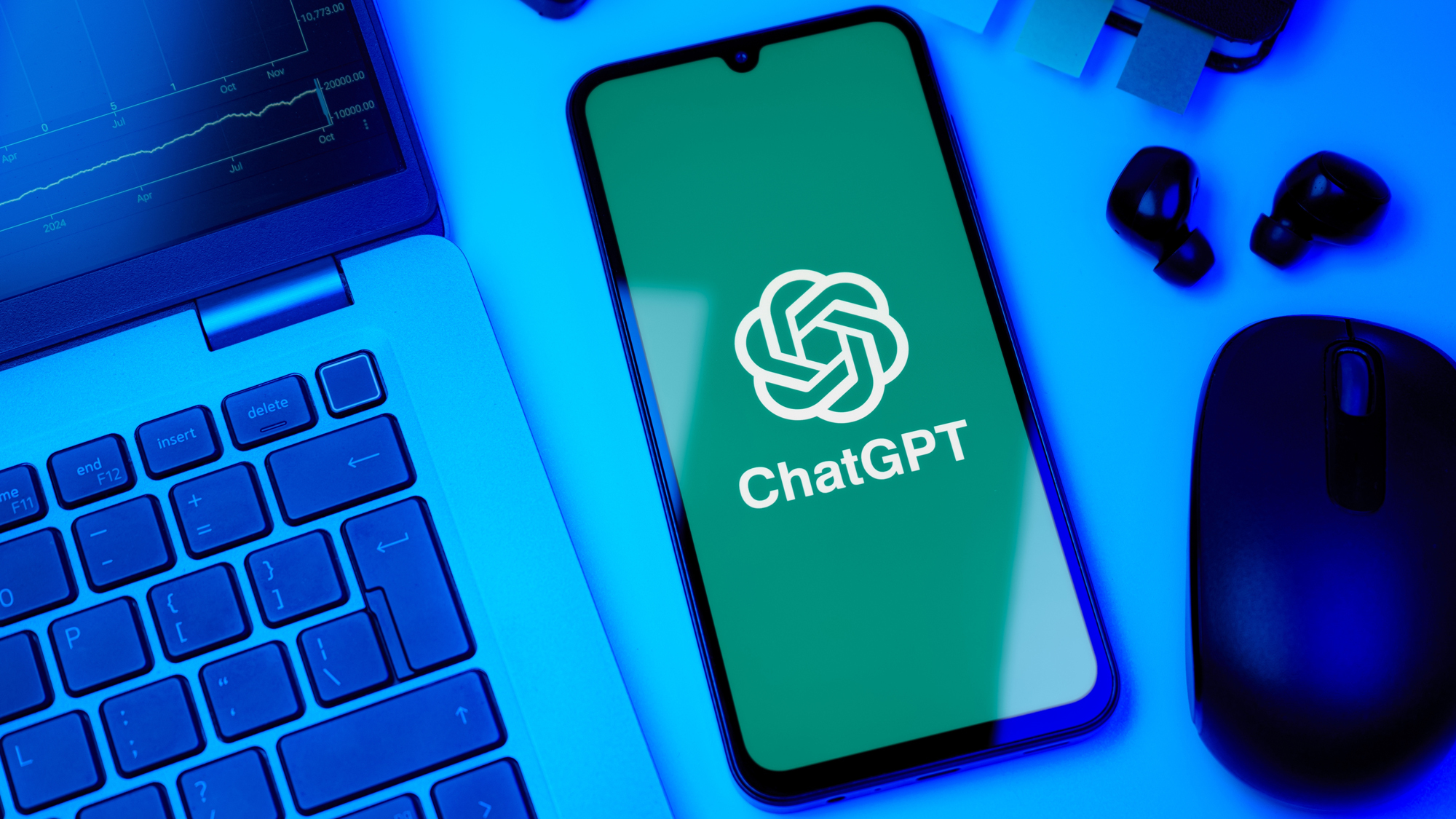OnePlus 7 Pro vs. Pixel 3: Which Phone Wins?
The new OnePlus 7 Pro gives you so much phone for the money that it puts Google's flagship on notice. Find out who wins the battle of the OnePlus 7 Pro vs. Pixel
In a world where Samsung and Apple are constantly slugging it out for the title of best smartphone, there's plenty of room for an alternative for people looking outside the Big Two phone makers for their next device. Both Google and OnePlus are eager to claim that space with flagship phones that deliver features to rival the latest iPhone and Galaxy handsets.
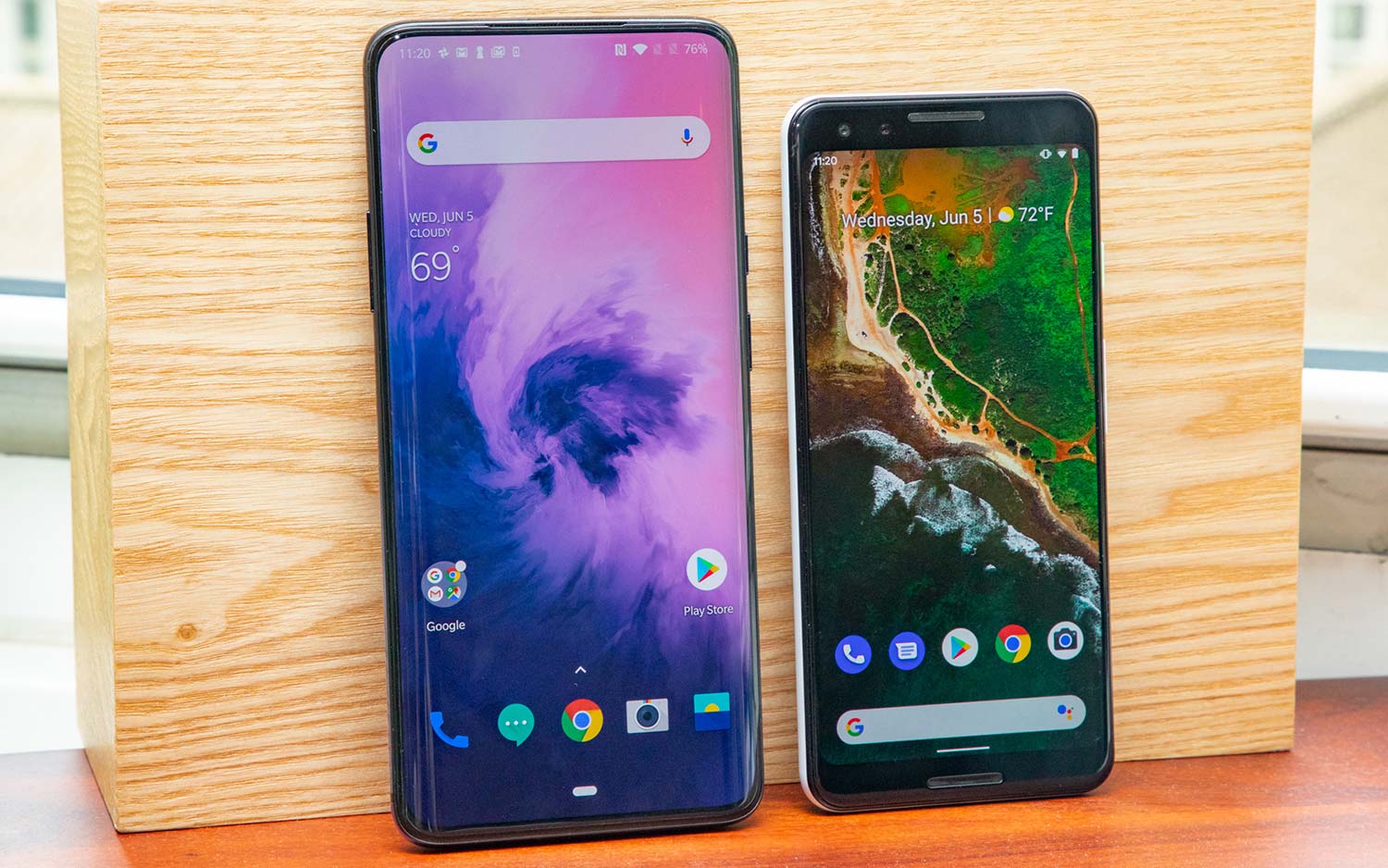
Tapping into computational photography has pushed the Pixel 3 to rank among the best camera phones available. But since the Pixel 3's release, OnePlus has had a chance to come out with an updated flagship of its own, the OnePlus 7 Pro. While it's the most expensive phone OnePlus has ever made, the 7 Pro still costs less than most handsets in its class — including the Pixel 3. And OnePlus has tried to address one of the areas where its otherwise stellar phones have come up short by adding a triple-lens setup to the back of its phone.
Can those three cameras give the Pixel 3's single lens a run for its money? And how do the top phones from Google and OnePlus compare on performance, battery life and other key factors? To find out, we pitted the two phones against each other in our OnePlus 7 Pro vs. Pixel 3 face-off.
OnePlus 7 Pro vs. Pixel 3: Specs
| Phone | OnePlus 7 Pro | Pixel 3 | Pixel 3 XL |
| Starting Price | $669 | $799 | $899 |
| Display (Resolution) | 6.67-inch AMOLED (3120 x 1440) | 5.5-inch OLED (2160 x 1080) | 6.3-inch OLED (2960 x 1440) |
| CPU | Snapdragon 855 | Snapdragon 845 | Snapdragon 845 |
| RAM | 6GB, 8GB, 12GB | 4GB | 4GB |
| Storage | 128GB, 256GB | 64GB, 128GB | 64GB, 128GB |
| microSD? | No | No | No |
| Rear Camera | 48-MP (f/1.6), 16-MP ultra-wide-angle lens (f/2.2), 8-MP telephoto lens (f/2.4) | 12.2-MP (f/1.8) | 12.2-MP (f/1.8) |
| Front Camera | 16-MP (f/2.0) | Dual 8-MP (f/2.2 and f/1.8) | Dual 8-MP (f/2.2 and f/1.8) |
| Battery | 4,000 mAh | 2,915 mAh | 3,430 mAh |
| Battery Life (Hrs:Mins) | 9:31 | 8:27 | 9:30 |
| Size | 6.4 x 2.99 x 0.35 inches | 5.7 x 2.7 x 0.3 inches | 6.2 x 3.0 x 0.3 inches |
| Weight | 7.26 ounces | 5.2 ounces | 6.5 ounces |
| Colors | Nebula Blue, Mirror Gray, Almond | Just Black, Clearly White, Not Pink | Just Black, Clearly White, Not Pink |
Design
OnePlus went premium with the design on its latest phone, employing some clever tricks to free up plenty of space for that immersive 6.67-inch display. The OnePlus 7 Pro's curved screen stretches from one end of the phone to the other, a feat made possible by the decision to use a pop-up mechanism for the phone's front camera. When you want to take a selfie, the camera pops up out of the top of the OnePlus 7 Pro; otherwise, it's tucked out of view.
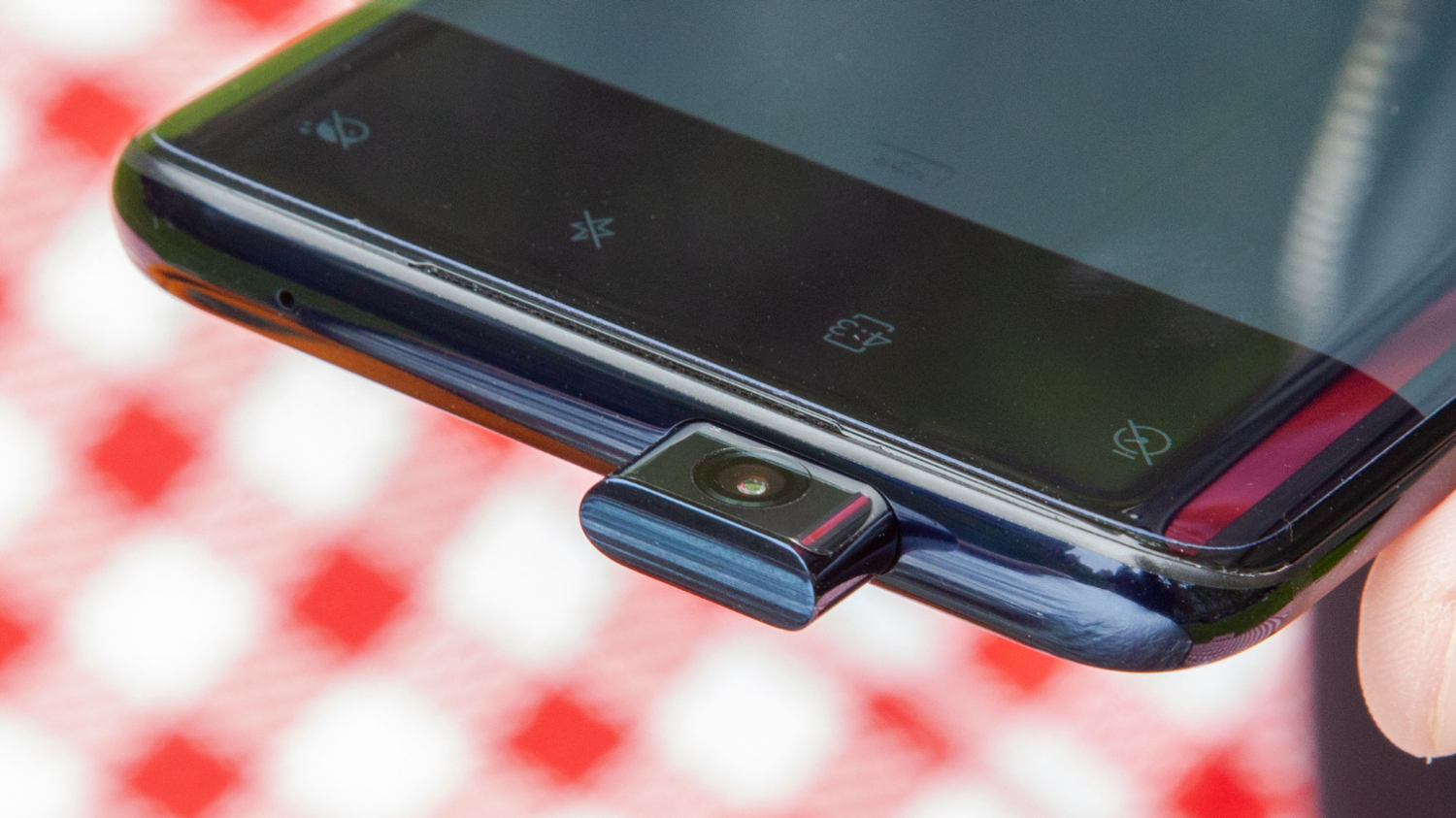
Google went with a more conventional look with the Pixel 3, where the screen ends before the phone's edge. In a callback to pre-iPhone X designs, the Pixel 3 has bezels on both its top and chin, and while they're not especially prominent, they do stick out, compared with the OnePlus 7 Pro's more polished look. The Pixel 3 XL squeezes in more display by turning to a notch to house its front cameras, but because of the notch's depth, it's not a very pleasing look.
Get instant access to breaking news, the hottest reviews, great deals and helpful tips.

The back of Google's Pixel phones feature the trademark Pixel Window, a two-tone design that mixes glass and metal. You'll also find a rear fingerprint sensor on both the Pixel 3 and Pixel 3 XL. There is no such feature on the glass black of the OnePlus 7 Pro; instead, OnePlus uses an in-display fingerprint reader on the phone's front, and it's one of the snappier we've tested.
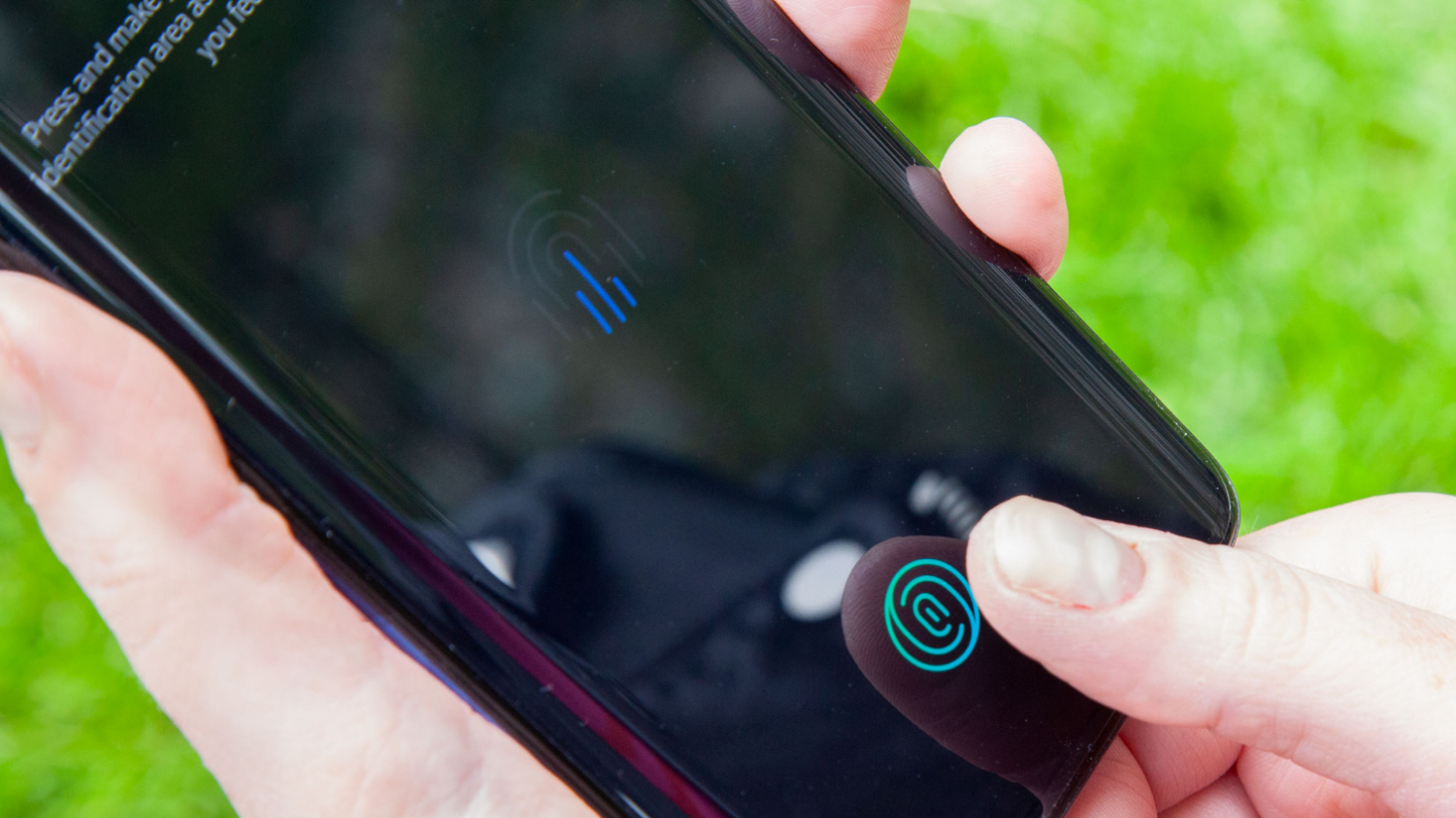
You'd expect the OnePlus 7 Pro's larger screen would mean a bigger phone than what Google offers, and you'd be right, though the 7 Pro isn't that much larger than the Pixel 3 XL. Despite offering a 6.67-inch display to the 3 XL's 6.3-inch screen, OnePlus' phone is only 0.2 inches taller and about the same width and thickness as the 6.2 x 3.0 x 0.3-inch Google phone. The Pixel 3 is a more compact 5.7 x 2.7 x 0.3 inches, making it a better option for anyone put off by the ever-expanding size of phones.
You can currently get either Pixel in Clearly White, Just Black and Not Pink color options. The OnePlus 7 Pro currently comes in either Nebula Blue and Mirror Gray, but stay tuned for an eye-catching Almond option.
Winner: OnePlus 7 Pro
Display
After stumbling with display quality on previous Pixels, Google got things right with the Pixel 3's OLED panel. You'll get balanced colors without the splotches and odd tints that some earlier Google phones exhibited. Instead, the Pixel 3 and 3 XL capture a wide array of colors — 202% of the sRGB color spectrum for the 3 and 170% for the 3 XL. Those colors are also very accurately rendered, as the Pixel 3 and 3 XL have respective Delta-E ratings of 0.44 and 0.35. (Numbers closer to 0 are better.)
Those numbers are comparable to what we saw with the OnePlus 7 Pro. The 7 Pro covers 180% of the sRGB color spectrum, while notching a very accurate 0.18 Delta-E rating.

The OnePlus 7 Pro features a sharper resolution at 3120 x 1440. That's about the same amount of pixels per inch as the 2960 x 1440 resolution on the Pixel 3 XL, but it's much sharper than the Pixel 3 and its 2160 x 1080 display.
But easily the biggest edge enjoyed by the OnePlus 7 Pro comes down to the refresh rate of its display. OnePlus uses a 90Hz refresh rate, a step up from the 60Hz refresh rate you'll find on most smartphone screens, including Google's Pixels. The higher refresh rate on the OnePlus 7 Pro means smoother scrolling and better gameplay.
Winner: OnePlus 7 Pro
Camera
The cameras on previous OnePlus phones have always fallen under the label of "Good Enough." OnePlus clearly wants to change that with the 7 Pro, and it's turning to an extra lens to improve the images this device captures. A 48-megapixel standard lens is joined by a 16-MP wide angle lens with a 117-degree field of view and an 8-MP telephoto lens that delivers a 3x optical zoom.
The Pixel 3 counters that more lenses don't necessarily mean better pictures. Google's phone has just one rear camera — a 12-MP shooter — but it's augmented by AI-powered features aimed at helping the Pixel capture better photos in low light and zoom in on details without adding noise to the shot. (We used a Pixel 3 in this photo comparison, but the Pixel 3 XL has the same camera setup.)
In this shot from the New York City Public Library, the Pixel 3 tries to compensate a little too much for the light streaming in from the window, and the result is a bluish cast that washes out some of the details on the ceiling mural. The chandelier by the window is bathed in too much light, too. The OnePlus 7 Pro's photo is darker, but you can see more detail, with the mural and chandelier both visible and in focus.
The Pixel regains its edge when we took a close-up of this pink rose. Here, the darker colors in the Pixel 3 shot allow the light pink of the rose to pop out from the blurred green leaves in the background. The OnePlus 7 Pro's shot lets too much light into the background of the shot for my taste, and as a result, it drains the color from the rose that should be the focus of the picture.
The Pixel also shows off its skills when the lights are low, though the gap in quality between the shot our Pixel 3 took of this New York City street and the one captured by the OnePlus 7 Pro isn't that big. The OnePlus 7 Pro boasts an improved Nightscape mode, and while the upper section of the photo looks overly dark, the shadows create an eerie effect that ultimately enhances the shot. Some lens flare on the left side of the shot proves too distracting, though.
The Pixel 3's Night Sight feature creates a more balanced shot, with a little blurring around the street lights and some washed out color on the buildings in the left foreground. The colors look more realistic in the Pixel 3's photo, though.
The Pixel 3's portrait shot also tops the OnePlus 7 Pro's version, and not just because our subject pops out of the background in a very striking way. (In fact, the quality of the OnePlus 7 Pro's bokeh effect is very impressive.) These photos were taken at the same distance — the Pixel 3 was able to include more of the background in the shot. To get a similar effect on the OnePlus 7 Pro, we had to move back to compensate for that phone's different focal length.
Up front, both the Pixel 3 and Pixel 3 XL feature two cameras, one a wide-angle lens so that you can fit a lot more detail into your selfies. The OnePlus 7 Pro makes do with just one 16-MP camera. While that doubtlessly gives the Pixel 3 an edge when you want to squeeze more people (or more of the background) into a photo, this self-portrait of my similarly named colleague Phillip looks better in the OnePlus 7 Pro's version.
The Pixel 3 struggles with the sunlight, washing out Phillip's face a bit. While his skin doesn't look as smooth in the OnePlus 7 Pro's shot, the color is more natural, and the OnePlus shot isn't flummoxed by all those passersby sauntering into the picture.
Winner: Pixel 3
Performance
Because they come out earlier in the year than Google's Pixels, OnePlus' flagship phones typically benefit from a newer processor. The OnePlus 7 Pro uses a Snapdragon 855, a generation better than the Snapdragon 845 powering the Pixel 3.

Normally, that wouldn't be a huge consideration, but Qualcomm says the Snapdragon 855 enjoys the biggest performance increase ever over its previous generation chipset. Tough luck, Pixel 3. OnePlus further stacks the deck in its favor by loading up the 7 Pro with RAM: The base model of the phone comes with 6GB to the 4GB of memory in the Pixel 3, and you can pack as much as 12GB inside the OnePlus 7 Pro if you like.
MORE: Best Smartphones - Here Are the 10 Best Phones Available
As you can imagine, that's going to mean a big advantage for the OnePlus 7 Pro in performance testing. On Geekbench 4, which measures general performance, the 12GB model of OnePlus' phone recorded a 11,227 score. That's iPhone XS territory. The Pixel 3 lagged way behind with a 7,316 result, which is at the lower end of what we've seen from other Snapdragon 845-powered phones.
Synthetic benchmarks don't tell the whole tale, of course, but when we've used the OnePlus 7 Pro, it feels snappy and we've noticed no lag, even when playing demanding games. Perhaps the Pixel 4 will close the gap when it arrives this fall, but right now, the OnePlus 7 Pro enjoys a clear performance edge.
Winner: OnePlus 7 Pro
Battery life
We'll be frank — neither the OnePlus 7 Pro nor the Pixel 3 is going to blow you away when it comes to lasting a long time on a charge. OnePlus' phone lasted 9 hours and 31 minutes on our battery test, in which we have phones continuously surf the web over T-Mobile's LTE network until they run out of power. That's slightly off the average result for smartphones and a couple hours shy of what the longest-lasting smartphones can produce.

But the OnePlus 7 Pro's result was still better than what we got from the Pixel 3, which ran out of power after 8 hours and 27 minutes of surfing. Part of the disparity is because of the battery — the Pixel 3 uses a 2,915 mAH power pack, while the OnePlus 7 Pro has a 4,000 mAh battery. (The Pixel 3XL does a little better with a time of 9:30, though it's still not greater in the grand scheme of things.)
MORE: Best Phone Battery Life - Longest Lasting Smartphone Batteries
Matters improve when it comes to charging. The Pixel 3 supports 18-watt fast charging, which Google says will deliver up to 50% of the phone's battery capacity after a half hour of charging. Speedy as that is, it's topped by OnePlus' Warp Charge feature. A half hour of charging the OnePlus 7 Pro gave us a 60% charge after 30 minutes; after an hour, the OnePlus 7 Pro's battery indicator was at 92%.
If you hate wires, you'll love the Pixel 3. It supports wireless charging, a feature that continues to elude OnePlus' phones.
Winner: OnePlus 7 Pro
Software
Google enjoys a home-field advantage here — as the maker of Android, it can tailor its devices to take full advantage of the mobile operating system. And indeed, you'll see that with the Pixel 3, which enjoys such cutting-edge features as a call screen, in which Google Assistant can fend off pesky robocalls on your behalf.

The Pixel 3 was also one of the first phones to offer Android 9 Pie's Digital Wellbeing tools for cutting down on smartphone use, and if you spring for an optional $79 Pixel Stand, you not only can enjoy wireless charging but you can turn your Pixel into a kind of Smart Display when it's not in use as a phone.
Don't overlook the OnePlus 7 Pro's implementation of Android, though. OnePlus has added features with its OxygenOS take on Android that actually add to the experience. Screen Recorder does what it says on the label, letting you record screen activity, which can come in handy for troubleshooting or sharing your mobile gaming exploits. Zen Mode takes Digital Wellbeing to the next level by locking you out of your phone for 20 minutes at a time — only phone calls and the camera work — so you can block out potential distractions.
OnePlus phones get Android updates pretty quickly, but no Android device gets updates as fast as Google's own handsets. So while the OnePlus 7 Pro will be able to run Android Q at some point, Pixel 3 users will get that update as soon as it arrives later this summer.
Winner: Pixel 3
Price and availability
OnePlus' phones have typically hovered around $500 in recent years, but the 7 Pro breaks that pattern. You can get the base model of the phone (6GB of RAM, 128GB of storage) for $669, a $120 increase from the OnePlus 6T. Upping the RAM by 2GB and doubling the storage will run you $699, while the top-of-the-line OnePlus 7 Pro (12GB of RAM and 25GGB of storage) costs $749.

That may be expensive relative to previous OnePlus models, but it's cheaper than what a Pixel 3 will cost you. That phone starts at $799, while upgrading to a 3 XL adds another $100 to your bill.
MORE: Best Cheap Phones: Top Android Picks Under $300
The Pixel 3 used to be harder to come by, available only through Verizon, the Google Fi wireless service, or unlocked through Google's store. But you can now find Google's flagship phones at Sprint and T-Mobile.
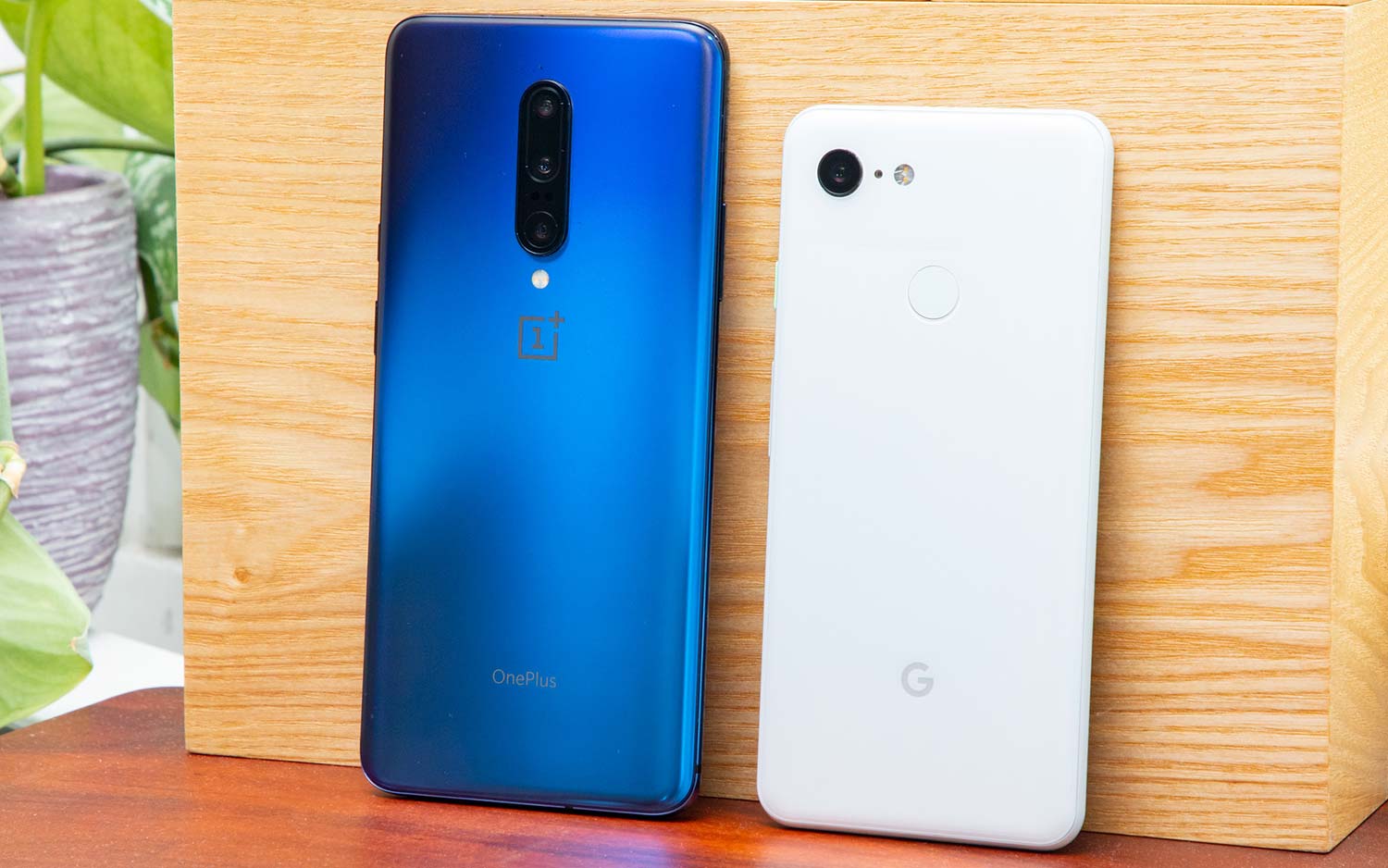
The OnePlus 7 Pro also has limited availability, though it's more widely available than previous phones. You can buy the phone unlocked from OnePlus, of course, and it will work on any GSM network. (Verizon customers can buy an unlocked version of the phone and ask Big Red to set up the OnePlus 7 Pro as a CDMA-less device that routes data, calls and texts over LTE.) T-Mobile also sells the phone, though only the $699 model.
Winner: OnePlus 7 Pro
Bottom Line: The OnePlus 7 Pro wins
OnePlus has always offered high-value smartphones. But the premium features packed into the OnePlus 7 Pro make it the easy choice if you want the best value in a flagship phone.
| OnePlus 7 Pro | Pixel 3/Pixel 3 XL | |
| Design (10) | 9 | 7 |
| Display (10) | 9 | 7 |
| Camera (25) | 21 | 24 |
| Performance (15) | 14 | 12 |
| Battery Life (20) | 15 | 14 |
| Software (10) | 8 | 9 |
| Price and Availability (10) | 8 | 7 |
| Overall (100) | 84 | 80 |
Google's Pixel has its advantages. If you're looking for the best phone for taking pictures, the Pixel 3 and Pixel 3 XL are hard to beat (especially since Huawei's P30 Pro, another top camera phone, is hard to track down in the U.S. — and that was even before the U.S. government ramped up its dispute with the Chinese phone maker.) The Pixel also has the best Android experience and works with more wireless carriers.
But the $130 price gap between the OnePlus 7 Pro and the Pixel 3 is hard to ignore, especially given the superior features you get with the less expensive phone. The OnePlus 7 Pro's striking design, 90Hz refresh rate and better processor elevate this phone to the next level. We'll compare the $479 Pixel 3a XL to the OnePlus 7 Pro in one of our next face-offs.
Credit: Tom's Guide
Philip Michaels is a Managing Editor at Tom's Guide. He's been covering personal technology since 1999 and was in the building when Steve Jobs showed off the iPhone for the first time. He's been evaluating smartphones since that first iPhone debuted in 2007, and he's been following phone carriers and smartphone plans since 2015. He has strong opinions about Apple, the Oakland Athletics, old movies and proper butchery techniques. Follow him at @PhilipMichaels.
